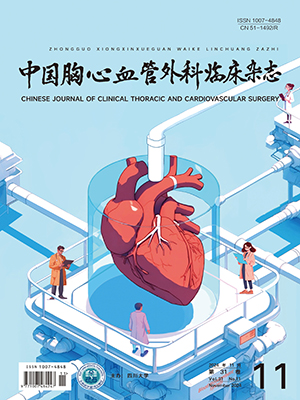Abstract: Objective To investigate the mechanism of protein kinase C(PKC) in immature myocardial ischemic preconditioning in order to further its clinical applicability. Methods Langendorff perfusion heart models of 24 rabbits were set up and they were randomly divided into 4 groups: ischemic reperfusion group (I/R group), myocardial ischemic preconditioning group (MIP group), chelerythrine group (CLT group) and protein kinase C group (PKC group). The emodynamics, biochemistry and myocardial ultrastructure were observed. Results The heart function recovery and myocardial water content in the MIP and the PKC groups were better than those of the I/R and the CLT groups (P lt;0.01). The adenosine triphosphate (ATP) content, superoxide dismutase activity, mitochondrial Ca2+-ATPase activity and synthesizing ATP activity of mitochondria in the MIP and the PKC groups were significantly higher than those of the I/R and the CLT groups (P lt;0.01). The dehydrogenase and creatine kinase leakage, malondialdehyde content, myocardial cell Ca2+ content and mitochondrial Ca2+ content in the MIP and the PKC groups were significantly lower than those of the I/R and the CLT groups (P lt;0.01). The myocardial ultrastructure injuries in the MIP and the PKC groups were less than that of the I/R and the CLT groups. Conclusion Myocardial ischemic preconditioning plays an important role in protecting immature myocardium, which is probably realized by the activation of PKC.
Citation: SUN Zhongdong ,GAO Shangzhi,WANG Zhiwei,et al .. The Role of Protein Kinase C in Immature Myocardial Ischemic Preconditioning. Chinese Journal of Clinical Thoracic and Cardiovascular Surgery, 2010, 17(5): 396-398. doi: Copy




